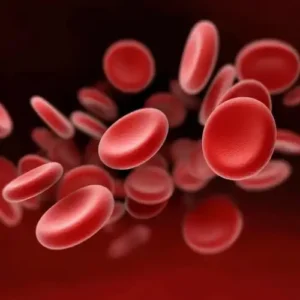What is asthma?
Asthma is a chronic inflammatory lung disease which causes breathing difficulties. In 2015, the British Lung Foundation reported that 8 million people in the UK (12% of the population) have been diagnosed with asthma, although only around 5.4 million are currently receiving treatment. The UK is near the top when it comes to highest asthma rates in Europe. And, one of the highest rates among children worldwide. Asthma is the most common chronic medical condition in children in the UK and one of the main reasons for hospital admissions. It is also a leading cause of hospitalisations in adults. In 2015 there were 1,468 asthma-related deaths, many of which may have been preventable with better education of healthcare professionals and patients. However, most people with asthma are able to lead normal, active lives with proper management of the condition.
The word “asthma” comes from Greek and means “hard breathing”.
What causes asthma?
Like eczema and hay fever, asthma often runs in families and can be inherited. Other family members may have associated conditions like hay fever, eczema or asthma. Asthma can develop at any age but most commonly starts in childhood, sometimes improving or even disappearing during the teenage years.
Smoking during pregnancy is also linked to increased asthma risk in offspring.
One of the most common triggers for asthma symptoms is when the airways become overly sensitive to various irritants known as triggers. Common asthma triggers include:
- Colds, flu and other viruses
- Exercise
- Laughing or strong emotions
- Cigarette smoke
- Certain weather conditions
- Changes in temperature
- Chemical irritants like sprays, aerosols and pollutants
- Allergies
Substances that provoke allergic reactions are called allergens. Common allergens linked to asthma attacks include mould spores, pollen, pets and sometimes food. However, the most prevalent trigger is an allergy to dust mites – studies show 85% of people with allergic asthma are sensitive to dust mites or their droppings. Dust mites are microscopic and live in dust around the home. Every home contains dust mites to some degree.
Asthma triggers are highly individual, with most sufferers reacting to multiple triggers.
What are the main symptoms of asthma?
Asthma flare-ups happen when cells in the lungs react to triggers. This causes bronchial muscle spasms and airway lining inflammation. Excess mucus also builds up, narrowing the airways so less air can pass through. This produces common asthma symptoms like breathing difficulties and coughing.
The characteristics of asthma vary and can mirror other respiratory conditions. Typical symptoms include:
Breathing problems – Difficulty breathing, chest tightness and shortness of breath are hallmarks of asthma but severity is highly variable between individuals. It is hard to predict how different situations will impact sufferers – some days can be symptom-free while urgent treatment may be needed at other times.
Coughing – Nighttime coughing is very common with asthma. Smokers have higher rates of other lung diseases like bronchitis so differentiating between the two can be challenging, especially for smokers. Accurate diagnosis is key as bronchitis only responds to antibiotics whereas asthma requires specific treatments to relieve symptoms.
Wheezing – The whistling sound produced when breathing, especially at night, is very typical of asthma sufferers. It happens when air is forced through swollen airways.
How do I know if an attack is severe? How long do attacks last?
Seek immediate medical help if exhausted to the point of struggling to talk or gasping for air.
Signs your asthma may be unstable include medication becoming less effective, nighttime coughing or wheezing, reduced activity tolerance or breathlessness affecting eating and talking. If your asthma seems uncontrolled, see your doctor about adjusting treatment.
Attacks can arise suddenly or take days to develop. Duration depends on severity – mild attacks may last hours but severe attacks can persist for multiple days. Most attacks are controllable with medication.
How is asthma diagnosed?
Asthma is often diagnosed from symptoms alone – e.g. persistent cough or exercise-induced wheezing. Spirometry (lung function testing) is the main diagnostic test, measuring airway obstruction.
You blow into a tube as hard as possible. A marker indicates your peak airflow on a meter. Reduced readings can confirm asthma.
How is asthma treated?
There is currently no cure for asthma but effective medications control symptoms. Most are inhaled, delivering small doses directly into the lungs. Common inhalers are aerosol “puffers” or dry powder devices. Spacer attachments can help if you struggle coordinating breathing with inhaler use. All asthma medications require a prescription. There are two main drug types:
Relievers – Fast-acting and alleviate symptoms by relaxing airway muscles for easier breathing. Taken only when needed or pre-exercise if attacks are triggered by activity. Do not reduce inflammation so overuse (more than 3 times weekly) indicates preventer medications may be needed. Some long-acting relievers provide longer duration relief and are taken twice daily.
Preventers – Control inflammation and reduce airway sensitivity to prevent attacks. Most contain steroid medication and are taken daily even when well. Preventers include brown, red or orange inhalers. Non-steroid options exist but are typically less effective, requiring 3-4 daily doses.
Inhaled steroids use very low doses with minimal systemic absorption, reducing side effect risks. Possible side effects include throat infections, cough, dry mouth or hoarse voice – rinsing your mouth post-inhalation can help.
For severe asthma, short courses of oral steroid tablets may supplement inhalers to calm airway inflammation. Long term oral steroids have greater side effect risks including weight gain, osteoporosis, skin thinning and easy bruising.
Some combination inhalers provide both long-acting reliever and preventer medication. Your doctor will advise the most suitable medications for your needs.
Controlling asthma and avoiding attacks
Work to identify your unique triggers then follow medical advice to avoid them. Consistently use prescribed medications and keep inhalers accessible. For dust mite allergy, try:
- Removing carpets in favour of wood, tile or vinyl
- Vacuuming and washing soft furnishings frequently or switching to leather/vinyl
- Light washable curtains, washed often
- Regular vacuuming and dusting with a mite-targeting vacuum cleaner
- Freezing or washing soft toys monthly
- Weekly hot washing of bed linen and pillow cases
- Anti-mite mattress and pillow covers
Other asthma control tips:
- Eat plenty of vitamin C-rich fruits and vegetables to fight viruses
- Well-ventilated living spaces
- Annual flu shot for ages 2+
- Avoid pets if allergic
- No smoking and minimise exposure to smoke/pollution
- Scarf over face in windy, cold weather
- Avoid going out on hot, polluted days
- See your doctor for medication and emergency steroid tablets before holidays
Asthma can flare up any time. Have an annual asthma review with your GP/nurse to discuss medication, triggers and actions if symptoms worsen. Peak flow monitoring at home tracks results to assess control and guide medication adjustments.
What to do during an asthma attack
- Immediately take reliever medication
- Stay calm and sit down
- Wait 5-10 minutes – if symptoms resolve, resume activities
- If no improvement after 10 minutes, call your doctor or 999, continue taking reliever every few minutes until help arrives
What if someone has an attack?
Ensure they take reliever medication. Encourage slow breathing. Seek medical help immediately if they struggle to speak or the reliever provides no relief within 10 minutes.
Photo by Anthony Cunningham for Zoom Health UK
Zoom Health is a leading UK supplier of Home Health Tests and Earplugs
This post was originally published in 2023. It was last updated in January 2025.





